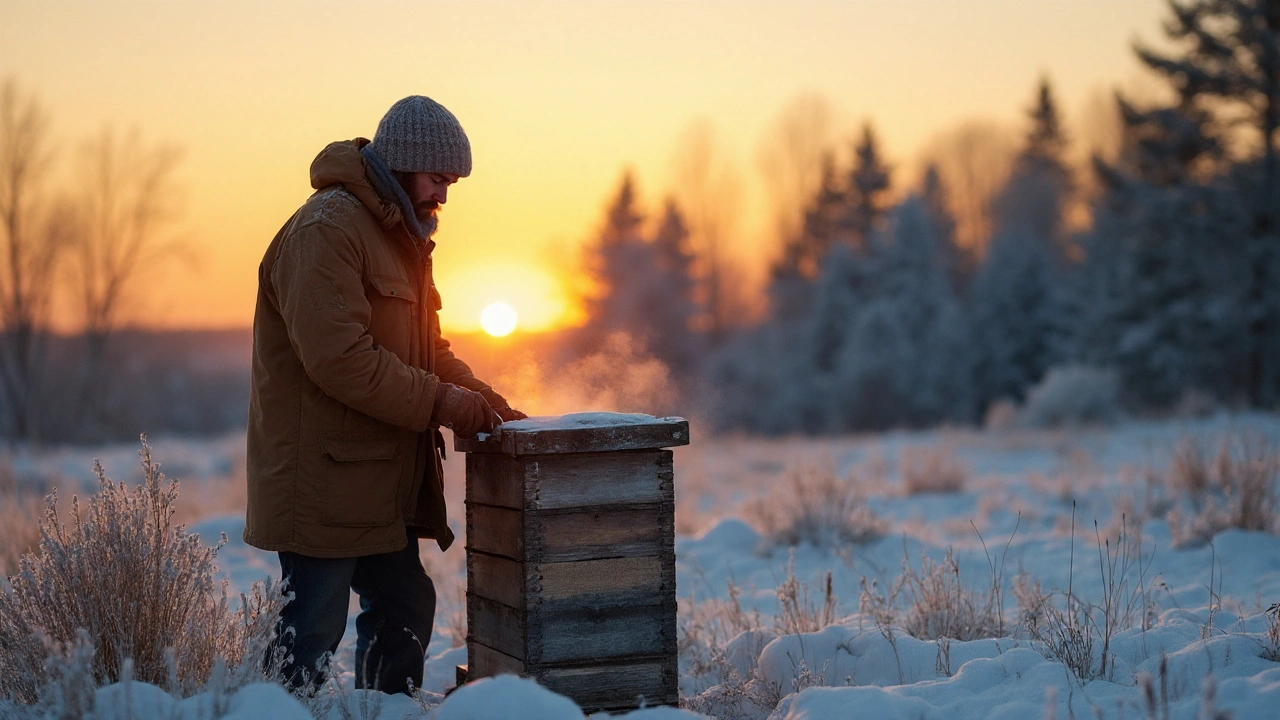Hive Insulation: Keep Your Bees Warm and Productive
When working with Hive Insulation, the practice of adding thermal barriers to bee hives so they stay warm during cold weather. Also known as bee hive insulation, it helps maintain a stable temperature inside the colony, reduces the need for extra heating, and protects honey stores. Hive insulation is a simple yet powerful tool for any beekeeper who wants a healthier, more productive colony.
Why Insulation Matters for Winter Beekeeping
Effective Winter Beekeeping, the seasonal management of bee colonies during the cold months hinges on keeping the hive temperature above the critical 10 °C threshold. Without proper insulation, bees burn through their honey reserves faster, which can lead to starvation and weakened queens. Insulation reduces heat loss, allowing the colony to use less energy to stay warm, which in turn supports better Colony Health, the overall vitality, disease resistance, and productivity of a bee colony. When the hive stays warm, bees can rear brood earlier in spring and store more honey for the next season.
Choosing the right Insulation Materials, the substances used to line or wrap hives, such as polystyrene, straw, or reflective foil is the next logical step. Each material has its own R‑value, durability, and cost profile. Polystyrene boards offer high R‑values and are easy to cut, but they can be pricey. Straw bales are cheap and biodegradable, yet they need regular replacement. Reflective foil can be layered over other insulators to bounce heat back into the hive. Combining two or more materials often yields the best results, as it balances cost, ease of installation, and thermal performance.
Beyond material choice, the way you apply insulation matters. A common approach is to line the inner walls of the brood chamber with a thin board, then wrap the outer box with a breathable covering. This creates a thermal envelope that mimics natural cavity conditions. Adding a small vent near the top of the hive prevents condensation, which can be a hidden killer for colony health. Remember, the goal is to retain heat while allowing moisture to escape.
Here are some practical steps to get your hives ready for winter:
- Inspect each hive for gaps or cracks and seal them with weather‑proof caulk.
- Fit a 1‑2 cm thick polystyrene board or a straw bale inside the brood chamber walls.
- Wrap the outer box with a breathable fabric or a reflective foil blanket.
- Install a small vent (about 2 cm wide) at the top to let excess moisture escape.
- Place a windbreak or hive stand to keep the hive off cold, damp ground.
These actions create a stable micro‑climate that lets bees conserve energy. Many beekeepers report that insulated hives require up to 30 % less honey consumption over the winter, which translates directly into higher spring yields.
If you’re watching your budget, DIY options work well. Recycled foam panels from packaging can be cut to size and fitted inside the hive. Old blankets or fleece can serve as an outer wrap; just be sure they’re clean and free of chemicals. For those who prefer a more polished look, commercially available hive jackets combine foam and foil layers in a single product, simplifying installation.
Even with the best insulation, mistakes can undo your effort. Over‑insulating the hive can trap too much moisture, leading to mold or fungal growth that harms the colony. Also, avoid blocking the entrance or the vent—bees need airflow to regulate humidity. Finally, periodic checks throughout the winter are essential. Look for signs of condensation, pests, or deadouts, and adjust insulation as needed.
By now you’ve seen how hive insulation ties together winter beekeeping, smart material choices, and colony health. The strategies covered here give you a solid foundation to protect your bees when temperatures drop. Below you’ll find a curated collection of articles that dive deeper into specific insulation materials, step‑by‑step installation guides, cost‑saving tips, and troubleshooting advice. Explore the posts to fine‑tune your winter plan and give your bees the best chance to thrive.
Winter Beekeeping: How to Manage Hives in Cold Months
Learn practical steps to keep your bee colonies healthy through winter. From insulating hives to monitoring temperature, this guide covers everything a beekeeper needs for successful cold‑weather management.

